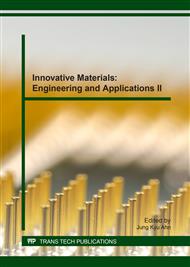p.516
p.521
p.527
p.533
p.541
p.548
p.554
p.563
p.569
Mechanical Properties Prediction of Interlayer Enhanced Laminated Carbon Fiber Composite Materials Containing Inclusions
Abstract:
Micro structure of laminated carbon fiber composite (L-CFRP) is complex and random distributed. So that the current prediction of mechanical properties for interlayer enhanced L-CFRP is not so accurate. To solve this problem, the inclusion fibers are dealt with equivalent processing using Mori-Tanaka theory and Esshelby equivalent inclusion principle. And then the equivalent cell model of interlayer enhanced L-CFRP could be obtained. The finite element method is adopted to predict the elastic mechanical properties of interlayer enhanced L-CFRP. Through the simulation and tests, the error of this prediction method is 3.72%. So the proposed prediction method is proved to be effective.
Info:
Periodical:
Pages:
541-547
Citation:
Online since:
February 2017
Authors:
Price:
Сopyright:
© 2017 Trans Tech Publications Ltd. All Rights Reserved
Share:
Citation:


